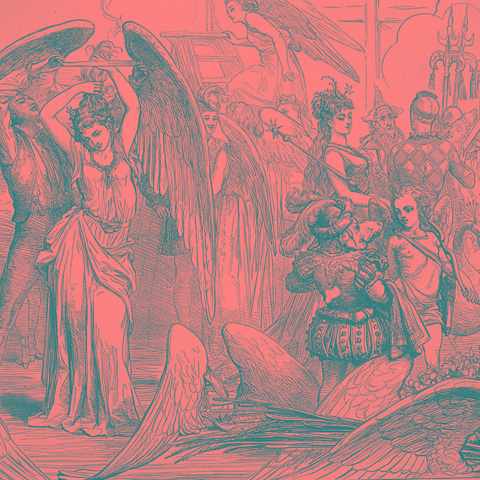Research reveals the serious side of the Christmas panto

“Oh yes it is, oh no it isn’t!” The pantomime is a staple of Christmas, as seasonal as turkey and minced pies. This thigh slapping form of theatre is part of England’s cultural heritage, and in Victorian England it was the most popular show.
Yet it has received limited academic study until recently.
Far from being a lightweight and frivolous spectacle, joint AHRC research led by the University of Exeter with Lancaster University entitled ‘A Cultural History of English Pantomime, 1837-1901’ reveals its cultural significance.
Victorian pantomime was similar to modern day performances, with an emphasis on knock about humour and the comic panto dame, such as Dan Leno, a famous music hall performer. According to research, Leno’s popularity would be similar to that of soap opera actors or reality show stars who attract audiences today.
Professor Jeffrey Richards of Lancaster University said: “Pantomime is still popular because it has evolved – it included music hall stars and nowadays panto is as likely to include reality TV stars and even former politicians like Anne Widdicombe, Neil Hamilton and his wife Christine as well as Hollywood stars like David Hasselhoff, Henry Winckler, Priscilla Presley and Mickey Rooney .
“It was and still is, the most popular and enduring theatrical genre and is an ideal cultural barometer of the age, unself-consciously reflecting current attitudes, values, beliefs and preoccupations.”
Another way that theatre managers encouraged audiences into their particular show was to highlight the special effects.
Exeter’s Professor of Theatre History Professor Kate Newey explains:”Panto would generate considerable profit and would often subsidise the theatre for the rest of the year. Victorian theatre managers would try to get the latest inventions for special effects into the show to attract the largest audience. This drove the motivation for invention and industrial innovation in stage machinery, the technology of which was often complex. The commercial impact of pantomime was responsible for this explosion of technological advancement in the theatre.”
Research also shows that theatre managers were a little concerned about the mention of party politics. In the 19th century strong laws were enforced by the Lord Chamberlain’s office on plays and pantomimes. However, it was possible for to offer a subversive take on topics otherwise banned in ‘legitimate’ theatre.
Nelson Lee, a Victorian performer and writer for East End theatres in London, wrote over 200 pantos in a 25 year span, often using fairyland and fairies to comment on social issues such as the Poor Law. Controversially a panto in the East End touched on the issue of transatlantic sailing safety issues. A dispute between ship-owners and sailors intensified as numerous sailors drowned when a ship capsized due to the regular practice of overloading, which brought the advent of the Plimsoll Line, a safety procedure. The Hoxton Theatre panto created a scene in which the ghosts of sailors were shown, illustrating the tough issues of the day.
The equivalent today would be if the panto commented on the current cuts to benefits and welfare or MPs abuse of expenses.
Professor Newey added:”Panto is humorous, and yet it was able to contain hard hitting political satire on the likely issues that people would have been talking about at the time. Panto was often anti-authority and seen as safety valve for local popular opinion.”
Ballet may be considered as a rather high brow art form today, however it was first introduced to mass audiences who would have been familiar with seeing it staged within a fairyland pantomime setting. Research has also shown that the latest Paris fashion influenced the ballet productions which were brought to London and celebrated in the press, with comments on the ethereal jumps and pirouettes performed on pointe.
The position of pantomime within the British public’s heart appears to remain, as Dick Whittington, Aladdin and Cinderella continue to entertain and fill theatres across the country.